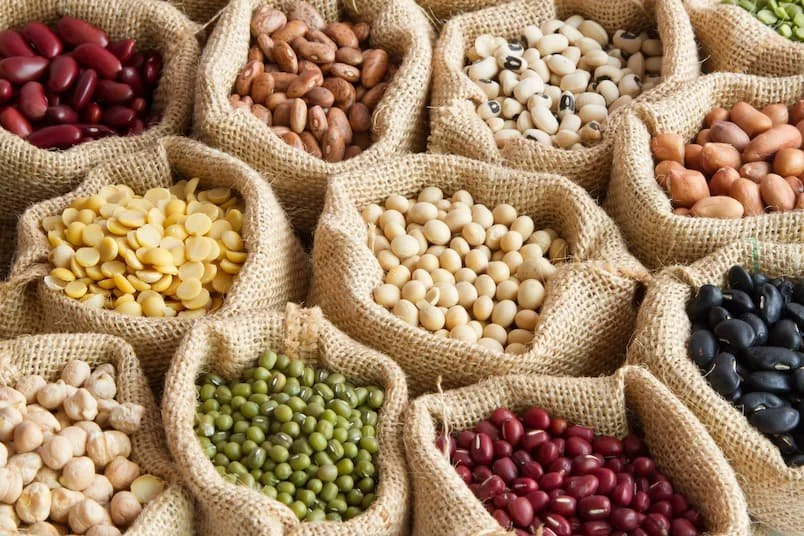Why and How to Soak Beans Before Cooking: The Health Benefits
Beans and peas weren't often served at our family table, but despite this, I am well informed about the proper ways to prepare them. Learning about the culinary traditions of our ancestors revealed an interesting fact to me: legumes should be soaked before cooking. This simple process is quite significant.
Soaking legumes not only saves cooking time but also significantly improves their digestibility. This method helps eliminate antinutrients such as phytic acid and enzyme inhibitors, which can interfere with the proper absorption of minerals and other important nutrients. Thus, dishes made from legumes become not only tasty but also much healthier.
Why Should You Soak Beans Before Cooking?
Our ancestors always prepared beans, grains, seeds, nuts, and cereals before consumption.
Common methods were soaking in water or fermenting. Everything changed in the age of industrialization, where we no longer pay attention to or think about how food is assimilated in our body.
As a result, we suffer from various gastrointestinal issues, autoimmune diseases, deficiency states, and chronic diseases such as diabetes, arthritis, and osteoporosis.
Nature is wise! It equipped beans with special protective weapons — antinutrients, which can be isolated in the bran shell or skin of the beans. This is precisely why I do not consider consuming bran a beneficial activity.
These antinutrients are needed by beans to protect themselves from being eaten by animals, from bacteria, and fungi.
These substances naturally begin to decompose when they land in the soil and start to sprout, when the environment they fall into becomes warm, moist, and acidic in pH.
Soaking mimics the germination environment, neutralizing antinutrients, activating special enzymes, and increasing the availability of vitamins and minerals contained in beans. If you do not soak beans before cooking them, you lose up to 80% of all the beneficial substances they contain.
Soaking also activates a special enzyme — Phytase, which helps us to fully digest beans. The same goes for cereals.
What Antinutrients are in Beans?
1. Phytic Acid. This substance protects the beans from premature sprouting.
However, when it enters our gastrointestinal tract, phytic acid binds to minerals such as Magnesium, Zinc, Iron, Copper, and prevents them from being absorbed, simply removing them from our body. We are not cows; we do not have the enzyme capable of digesting Phytic Acid. Gradually, consuming foods rich in Phytic Acid can lead to a deficiency of minerals. And from there, it's not far to problems with the digestive system, immune system, musculoskeletal system, anemia, allergies, and hormonal issues.
This especially affects children, as their developing bodies feel the lack of necessary substances more acutely. Here is one of the reasons for the development of skin problems (eczema) and various allergies.
Soaking does not completely destroy Phytic Acid, but it reduces its quantity by up to 75%.
2. Lectin. This is a type of special protein that is present in many foods. But especially in large amounts in cereals and beans.
Lectin, when it reaches our intestines, sticks to its mucous membrane and eventually damages it.
Then develops Leaky Gut Syndrome — the formation of tiny tears in the mucous membrane of the intestine. I have already described this disease (see cereals). All this, taken together, triggers allergic reactions and other serious diseases such as Crohn's disease, Hashimoto's goiter, fibromyalgia, multiple sclerosis, arthritis.
And if lectin can be deactivated by soaking beans, it is impossible to achieve this in products from soy and wheat! That is why I advise avoiding wheat, which in addition to lectin also contains gluten.
3. Digestive Enzyme Inhibitors. These substances protect beans from everyone who wants to try them, including us.
They deactivate Trypsin — an enzyme that we need to digest protein. Over time, this leads to excessive secretion of enzymes by the pancreas, which negatively affects its normal function and may end in the development of benign tumors.
4. Oligosaccharides. Our bodies lack the necessary enzymes to digest these complex sugars.
Once they reach our intestines, these substances form carbon dioxide and methane. As a result, we feel bloating.
But the problem is that constant fermentation processes in the intestines and the formation of these gases lead to inflammation and damage to the intestinal mucosa. Welcome to Leaky Gut Syndrome.
How to Soak Beans?
The method is actually very simple. The most important thing you'll need is time. So, you will have to plan ahead.
Ideally, beans should be soaked for 12-24 hours. I always add 1 teaspoon of baking soda.
Bean Soaking Method
You will need:
- An ozonator
- Boiled filtered water
- Beans
- A glass or enamel pot
I take water from a filter, or you can simply boil water in a kettle, then pour this water over the beans. Don’t forget that beans swell up with water, so make sure to use enough water to cover them by a couple of inches. Then I cover it with a lid and leave it on the counter.
After the soaking period is over, I thoroughly rinse the beans and use them.
If you suffer from any chronic disease, I recommend temporarily avoiding beans due to the potential risk of sensitivity to the antinutrients contained in them, until you can consume them without any complications for your health.
Wishing you and your loved ones health.
